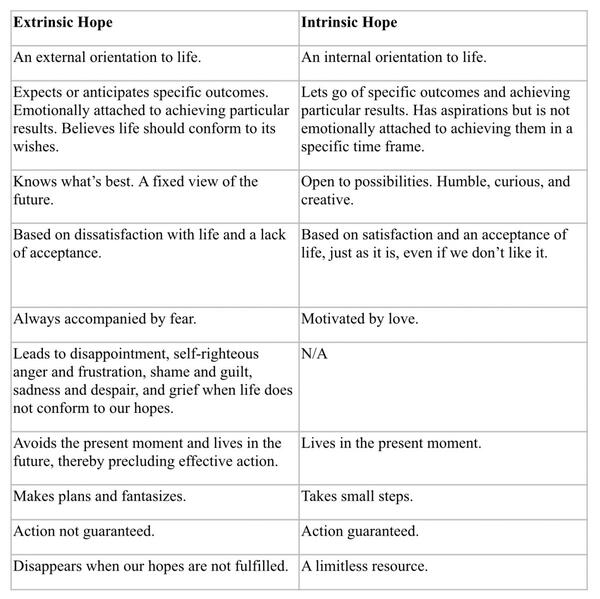
Often in discussions about Hope, a counter argument will be presented (such as this one in Orion Magazine by Derek Jensen), which states that Hope is a bad thing that brings us down, something that keeps us striving and desperate, but never reaching those goals and aspirations—always grasping.
Though I can hear some of these arguments and see the danger they're trying to highlight, it has never resonated—anything can be misused by humanity, including Hope, but that doesn't mean we should throw the baby out with the bathwater. But I've recently found a remedy and a reason regarding those disheartening views in Intrinsic Hope: Living Courageously in Troubled Times by Kate Davies (New Society Publishers, 2018). In it she beautifully illustrates the difference between intrinsic v. extrinsic Hope. Extrinsic Hope is the externally-focused and based version of which Jensen and others warn–we fantasize and look for elusive Hope outside ourselves and when it doesn't live up to our vision, it is dashed against the rocks and we are forlorn again. But intrinsic Hope is internally generated and in endless supply. It isn't predicated on what you or he or she may or may not do–it simply is. This wonderful infographic from Intrinsic Hope lays it all out for us:

I recognize myself in many of the extrinsic characteristics, do you? Derek Jensen has a point–living in that place of extrinsic Hope can keep us stuck, grasping, constantly crestfallen. But I wonder how different our individual and collective world would be if we lived each day by the second column, in a state of intrinsic, self-renewing, surrendered Hope—acceptance and love regardless of the external whirlwind around us.
For more on this topic, listen to the following podcast interview with Kate Davies
or read her book, Intrinsic Hope.
